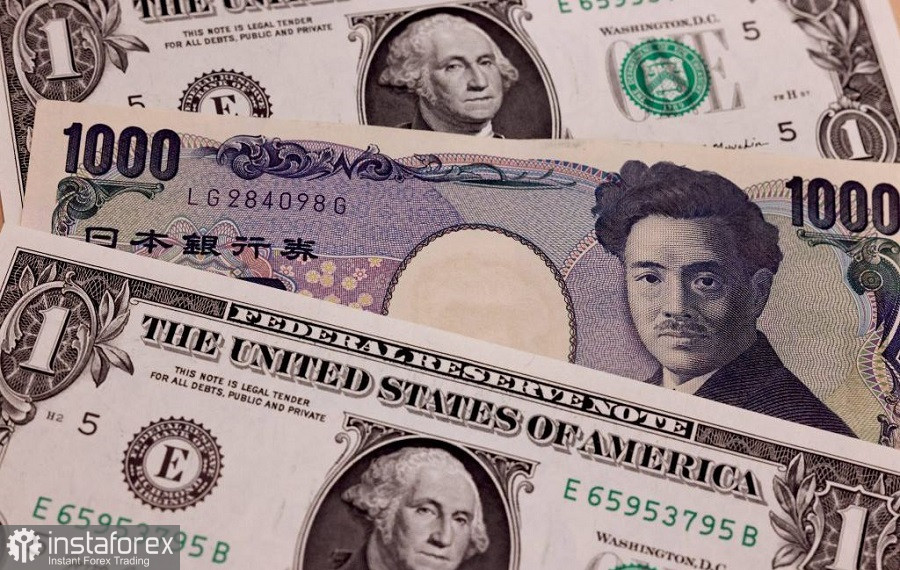At the start of the new trading week, the dollar-yen pair updated its multi-month price low, reaching 127.25. The pair was last in this price area in May last year. The yen is strengthening ahead of the Bank of Japan's January meeting, which will be held the day after tomorrow, January 18.
Traders ignore Kuroda
Rumors that the Japanese regulator will continue to move towards monetary policy normalization are supporting the national currency. In my opinion, Bank of Japan is really on the threshold of cardinal changes, but these changes will probably take place not in January but in the spring of this year, when a new leader will take over the helm of the Japanese central bank to replace the consistent "dove" Haruhiko Kuroda. All of his potential successors are delivering rather hawkish messages, while Kuroda himself maintains a dovish attitude. Therefore, one should not expect any sensations from the January meeting: the current head of the central bank will most likely repeat the previously announced messages about commitment to accommodative policy.

Nevertheless, the yen continues to strengthen its position, despite Kuroda's soft comments. The USD/JPY pair has been within the downward trend since October last year, when the Japanese authorities re-conducted a currency intervention. Then a series of events followed in favor of the development of a bearish scenario: first, the dollar weakened throughout the market (against the background of slowing inflation in the U.S. and rumors of a slowdown in the Fed rate hike), and then the Bank of Japan unexpectedly doubled the yield ceiling on 10-year bonds. According to a number of experts, the central bank has taken only the first step towards normalizing monetary policy. And although Haruhiko Kuroda, as they say, "directly" refuted this assumption (stating that this decision was due to "market-technical reasons"), traders, apparently, are betting that the regulator will further weaken its policy of control over the yield curve in the future or even abandon it altogether. The market is increasingly talking about the possible implementation of such a scenario.
Recall that yield curve control was one of the key factors behind the 12% devaluation of the Japanese currency against the dollar. And after the Bank of Japan expanded the range of yield tolerance from the target level in December, the yen strengthened by more than six percent.
It is noteworthy that traders ignore Kuroda's dovish statements, who not only refutes hawkish intentions, but also expresses readiness for further steps to ease monetary policy. Despite such announcements, there is growing confidence in the market that the Bank of Japan will announce further adjustment to the yield curve management procedure or even abandoning it in the coming months. Some analysts suggest that this will happen as early as Wednesday, following the results of the January meeting.
Downward outlook for USD/JPY
In my opinion, market expectations are too high, so the results of the January meeting of members of the Japanese regulator may not be in favor of the yen. But the trading principle "buy on rumors, sell on facts" is now playing on the side of the USD/JPY bears: during the Asian session on Monday, the yen was in high demand.
Setting aside intraday price fluctuations, we can assume that the pair retains the potential for further decline, both in the medium and long term.
First, don't forget about the weakening dollar. The latest CPI growth report, which reflected a slowdown in U.S. inflation, put pressure on the greenback. The probability of a 25-point rate hike at the Fed's February meeting rose to 93%. In addition, the market again started talking about the fact that the Fed may end the cycle of raising interest rates ahead of schedule, and its final level will be below the aanounced level of 5.1%.
Secondly, the yen will only strengthen its position in the near future, even if the outcome of the Bank of Japan's January meeting is not in its favor. In just 3.5 months, Haruhiko Kuroda will leave his post, while his likely successors, in one form or another, say that the Japanese regulator may have to make the next steps towards normalization of monetary policy. In particular, former Vice Minister of Finance for International Affairs Takehiko Nakao said he supports a smooth departure from the central bank's ultra-loose monetary policy. Another contender, Columbia University professor Takatoshi Ito, voiced a similar position.
Technical picture of the pair
The technical picture also speaks about the priority of the downward scenario: on the daily chart, the pair continues to be on the lower line of the Bollinger Bands indicator, as well as under all the lines of the Ichimoku indicator, which shows a bearish Parade of Lines signal. Considering medium-term and long-term trading, it is advisable to use corrective bursts to open short positions to the first support level at 127.25 (the price low of the current year) and 126.50 (the lower line of the Bollinger Bands indicator on the weekly chart).
 English
English 
 Русский
Русский Bahasa Indonesia
Bahasa Indonesia Bahasa Malay
Bahasa Malay ไทย
ไทย Español
Español Deutsch
Deutsch Български
Български Français
Français Tiếng Việt
Tiếng Việt 中文
中文 বাংলা
বাংলা हिन्दी
हिन्दी Čeština
Čeština Українська
Українська Română
Română

